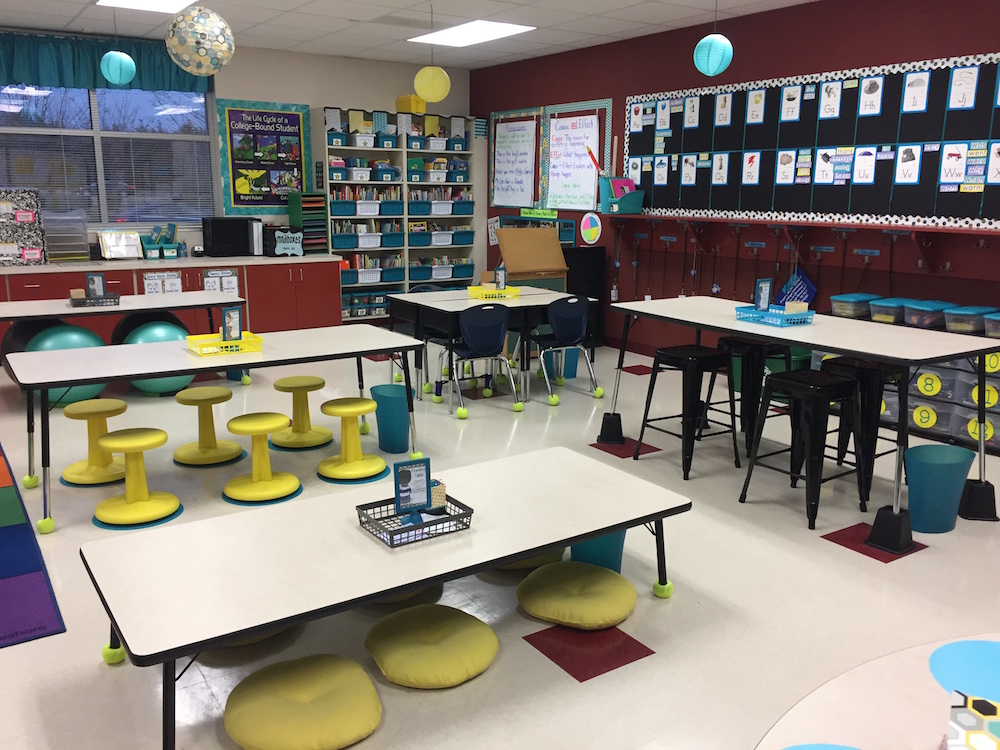Different classroom seating arrangements are important because they provide educators with versatile tools to tailor the learning environment to various teaching objectives and student needs. These arrangements influence student engagement, interaction, and learning experiences. By offering a range of seating options, teachers in all levels can create dynamic spaces that accommodate different learning styles, foster collaboration, and increase student engagement.
Varying seating arrangements cater to the diverse ways in which students absorb and process information. Some students thrive in traditional rows where they can focus on direct instruction, while others flourish in collaborative setups where they can actively participate and exchange ideas with peers. Changing the seating arrangement periodically can rejuvenate the classroom atmosphere, keeping students attentive and curious.

Providing a variety of classroom seating arrangements respects the uniqueness of each student. Students have diverse preferences and comfort levels, and by providing alternative seating options like standing desks, stools, and other types of seats, educators can acknowledge and accommodate these differences. Moreover, the ability to adjust seating arrangements empowers teachers to adapt to different teaching strategies and educational trends, making the classroom a dynamic space that supports evolving pedagogical goals. Embracing different seating arrangements fosters a student-centered approach to learning, acknowledges the importance of collaboration, and underscores the role of the physical environment in enhancing the overall educational experience.
Here are ten different seating arrangement that are worth checking out:
- Traditional Rows: Purpose: The traditional rows arrangement facilitates teacher-centered instruction. It allows the teacher to address the entire class easily, making it suitable for lectures and presentations. This setup works well when conveying essential content to a larger group of students.
- Circle: Purpose: The circle seating arrangement promotes open discussions and equitable participation. All students can see each other, fostering class debates, peer sharing, and community building. It encourages active participation and helps develop communication skills.
- Clusters or Pods: Purpose: Clusters or pods encourage collaboration and group work. Students in each cluster can collaborate on projects, exchange ideas, and learn from one another. This arrangement is great for cultivating teamwork and problem-solving skills.
- U-Shape: Purpose: The U-shaped arrangement combines teacher-led instruction with student interaction. It allows for easy teacher-student and student-student engagement, making it suitable for discussions, workshops, and presentations.
- Semi-Circle: Purpose: The semi-circle arrangement maintains a teacher-centered focus while still encouraging increased student interaction. It’s effective for class discussions, presentations, and activities that require both teacher guidance and peer engagement.
- Stadium or Theater Seating: Purpose: This tiered seating arrangement improves visibility, making it great for presentations, demonstrations, and lectures. It ensures that every student has a clear line of sight to the front of the classroom.
- Horseshoe: Purpose: Similar to the U-shape, the horseshoe arrangement encourages discussion and interaction. It provides a defined focal point for the class while allowing for face-to-face conversations.
- Pairs: Purpose: Pair seating promotes one-on-one interactions and partnerships. It’s ideal for collaborative activities, peer reviews, and partner discussions.
- Combination: Rows and Groups: Purpose: This arrangement blends the benefits of rows and groups. It allows for both teacher-led instruction and peer collaboration, suitable for varied classroom activities.
- Alternative Seating: Purpose: Alternative seating arrangements, such as using cushions, bean bags, or standing desks, cater to different learning styles and encourage a dynamic learning environment. This setup can improve comfort and engagement, particularly for kinesthetic learners.

Selecting the right seating arrangement depends on your teaching objectives, class dynamics, and the type of activities you plan to conduct. Adapting arrangements can help maintain student engagement and facilitate different learning styles.
The Principal’s Desk was founded by Dr. David Franklin. Dr. Franklin is an award winning school administrator, education professor, curriculum designer, published author and presenter at national and international education conferences. He is also the co-author of “Can Every School Succeed” and the upcoming release: “Advice From The Principal’s Desk”.
